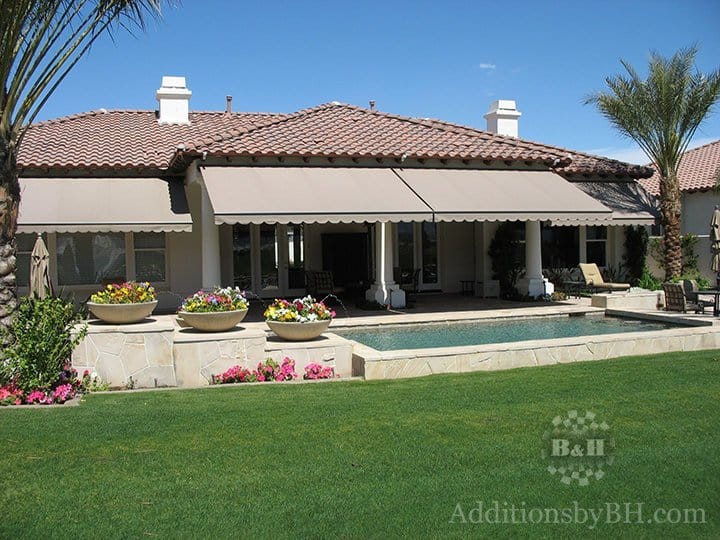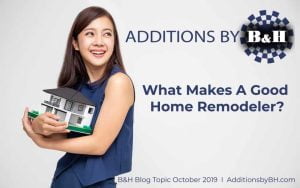A retractable awning can provide protection from the sun’s harmful rays and the opportunity to enjoy that deck or patio space more often.
If you have considered spending more time outside but currently find it less than comfortable, review our top 10 things to consider before adding a retractable awning article. It will provide you with relevant tips to make your outdoor space more sophisticated, fashionable and relaxing. Let’s take a look at those tips by starting with where an awning works best.
1. Where to install a retractable awning.
Installation of a retractable awning can be relatively easy and minimally intrusive to your home’s exterior. A professional installer can help you determine if you have chosen a safe installation location and if this location takes full advantage of the product you are contemplating purchasing.
In general, the location of a retractable awning can be almost anywhere outside your home. Patios, decks, poolside, pergolas, above windows; all of these locations are typically a good place to consider installing your new awning. Keep in mind that if the location you desire to install your awning is not currently optimal for an awning, modifications to your home can possibly be made to utilize your desired location. Considerable thought and due diligence should be completed when deciding where your new awning will be optimally enjoyed. For this expertise, be sure to lean on your installer for advice.
2. Components
Purchasing a retractable awning is a great investment, let us take a moment to examine the different components that make up this investment. Some of the major components of a retractable awning are the following:
– The fabric is probably the first thing that comes to mind. There are various types and styles, but the fabric is what shades you from the sun’s harmful rays and protects you from the elements.
– A valance plus is an additive to the fabric that extends downward to provide more shading coverage.
– The frame is the collective parts that make up the assembly of moving parts and is what provides the awnings stability and control features.
– The motor is of course what makes the awning open and close. A motor is only included with an automatic retractable awning.
– The roller tube is what the fabric is coiled upon and runs the length of the awning.
– The arms are what extend the awning opened and closed.
– The protective hood is self-explanatory for its function and is located directly over the awning assembly and protects the awning fully when in the closed position.
3. Manual or automatic
Deciding on a manual or automatic awning is perhaps your next decision. Both types provide the same functionality but different levels of opening and closing convenience. A manual requires a crank to open and close the awning, where an automatic awning does this function for you with the touch of a button. The decision comes down to a few key factors: electrical availability, cost, and level of convenience.
For the awning to operate automatically, you’ll likely need an electrical source available to the awning for it to function. Check with your installer for this possibility if an obvious one doesn’t exist. Cost may also play a factor in your decision as an automatic model may be more of an investment than a manual version and if an electrical line needs to be run to supply the automatic unit, this too will likely carry some extra cost. Finally, level of convenience, if you don’t mind a cranking motion for a few moments to open and close your awning then the manual model could be a good option for you. However, if you prefer to have the awning open and close on demand, then an automatic awning is the way to go. You can feel the difference between the two versions by operating them yourself in our Chalfont showroom.
4. Frame Design
The design and color of the retractable awning is another necessary item you should consider carefully. The obvious thing to mention here is that you want the design of your awning to compliment your home’s exterior design as much as possible. You should also want the awning to be durable, long-lasting and maintain its charm through many seasons of use. This begins with the type and color of your frame design.
There are multiple frame designs available but be sure to look for an awning that incorporates high-quality lateral arms; components that incorporate aluminum roller tubes; extruded elbow, shoulder and arms as well as protective hoods. There are limited color options for the frame, compared to the fabrics, and you can expect to have less than a dozen choices.
5. Fabric Design
Not surprisingly, the fabric choice plays a major role in the overall look of the awning. The variety of choice of fabric and color totals in the hundreds. This is great when you are trying to match the design of your home, but the amount of variety can become a bit overwhelming. We suggest leaning on your dealers’ expertise for advice, surfing the net for pictures of the various color and style options and driving around your neighborhood to catch a glimpse of the awnings your neighbors have already installed.
Some basic things to consider on fabric and color:
-A plain fabric color will likely show more imperfections over time than a pattern will.
– Stains may be more noticeable on a dark-colored fabric than a light-colored one, as the awning ages.
– The awning can be made of various fabrics such as vinyl acrylic, polyester vinyl composite, and others.
6. UV Protective
Protecting yourself and your family from the sun’s harmful rays is an important aspect of spending more time outside. Many awning fabrics can block 99% of UV light, but not all, so pay close attention to this being on the label.
The sun can harm more than your skin, it does considerable damage in fading fabrics and breaking down other outdoor furniture. If your awning is placed in a location where you like to leave your outdoor furnishings permanently than it can help extend the life of those items by protecting them from the sun.
7. Saving Energy
Now on top of being an attractive additive to your home’s exterior and protecting you from the sun, a retractable awning can also help you save on your energy bills. If we revisit the sun once again and know that it gives off quite a bit of heat, that heat building up inside your home is called heat gain. Heat gain can force your air conditioning to run much more on a sunny day than it would have to on a cloudy one. If your awning(s) is placed and extended in a location that sees a good amount of sun throughout the day, you can expect to save on your cooling bills.
8. Protecting Your Awning
There isn’t much to do to protect your awning once it is installed but it is important to follow some general operating rules to ensure it operates properly and maintains its original charm. Some of these examples are as follows:
– Try not to roll up the awning when the fabric is wet. If it starts to rain and retracing the awning is necessary, due to wind or other weather hazards, be sure to open the awning and let the fabric dry at the earliest opportunity.
– It is good practice to keep the awning in the closed position when not in use.
– Wind and severe weather can damage your awning, be sure to keep it in the closed position during anticipated bad weather events.
– Cleaning your awning fabric regularly, with mild detergent, will help the fabric look its best over time. This is especially true if you live near an ocean. Saltwater can prematurely cause wear on the awning’s fabric and parts, if not properly cared for.
9. Warranty
A warranty is a guarantee that your product will last for a certain period of time. Retractable awning warranties commonly come from the manufacture of the awning and perhaps also from the contractor who installed it for you. The warranty is only valid if you care for your awning properly and if you make a claim against the warranty during the warranty period.
Understanding your warranty is vital to making a valid claim and it is recommended that you read your warranty documentation. Also, the fabric of an awning and the mechanical parts of an awning may deteriorate at different rates and therefore may carry different limited warranties. Take note of these differences and plan accordingly.
10. Contractor
If you have read any of our other blog posts, then you know that we encourage you to perform some concentrated due diligence on finding the right contractor for your needs. This project is no different. Choosing the right company to install the perfect retractable awning takes experience and education on the awning product itself.
Your awnings operation is only as good as the person installing it. If your awning is installed improperly, you can bet that your manufactures warranty will be voided. Although this project may be smaller in cost and duration then some of our other topics, those factors do not diminish the importance of choosing a qualified installer. To read more about choosing the right contractor, check out our full blog post on Choosing the right contractor.
Conclusion
Retractable awnings can be an excellent choice to enhance the exterior of your home and we hope this list helps you make the right awning decision. Please let us know what you think of this article and how it has helped you with your project. If you are looking for an awning installer in Montgomery County or Bucks County Pennsylvania, please contact Additions by B&H located in Chalfont. They are BBB accredited since 2014, and the company enjoys an A+ rating. Additionally, B&H has passed the screening process and is approved by HomeAdvisor for their high-quality of service over the past five-plus years.
Additions by B&H has been completing home improvement projects for the last 38 years and is well established in the local community. Their online reviews speak for themselves and we encourage you to review them.
Good luck with your next project!
– Additions By B&H






